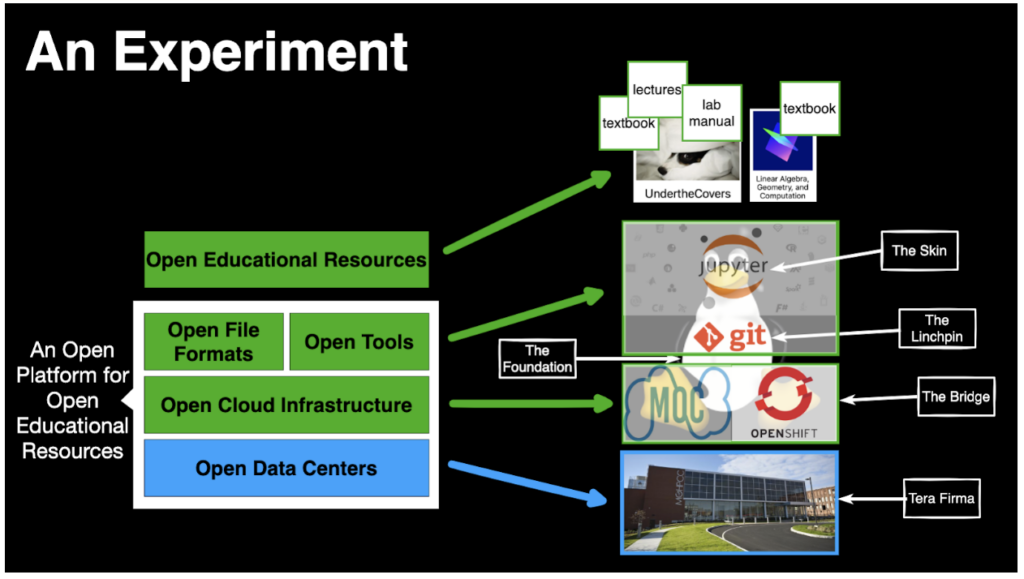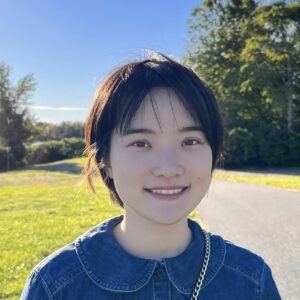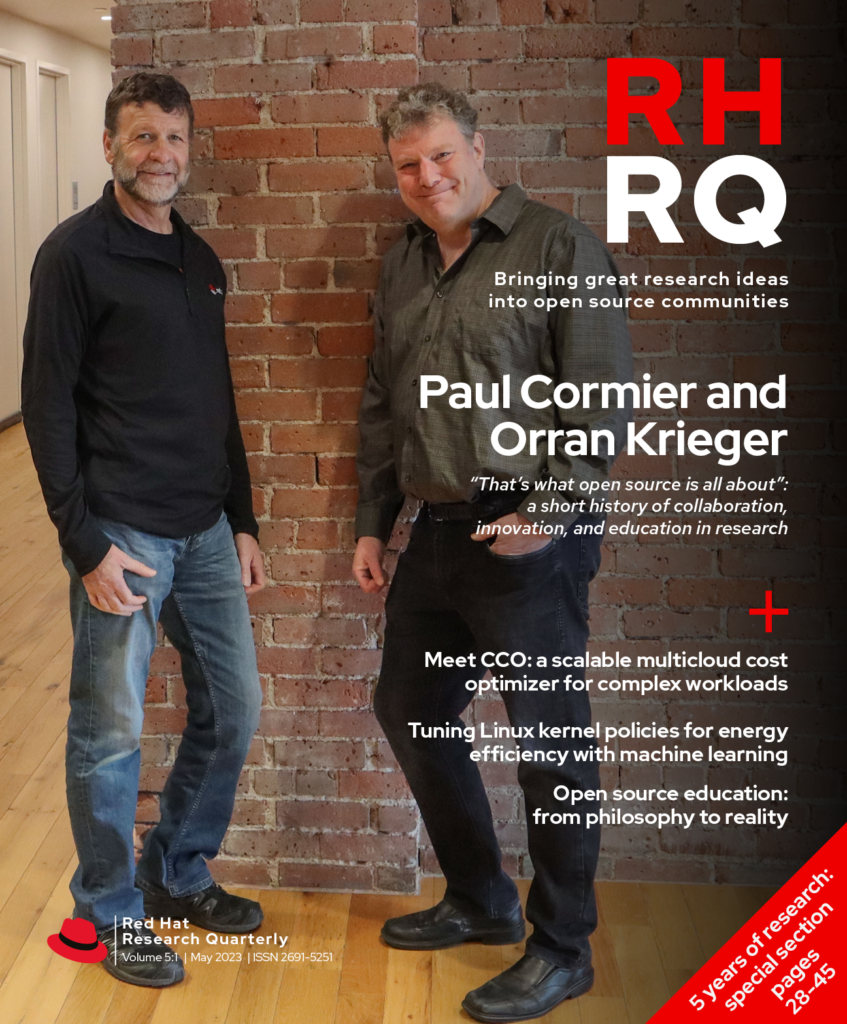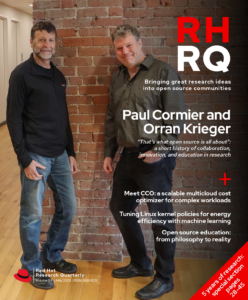Researchers, interns, and industry engineers have joined forces to create an open education platform using Red Hat OpenShift Data Science.

Open source technology has transformed many industries, and education is now poised to be the next frontier. Open Education (OPE), an innovative project initiated by Boston University professor Jonathan Appavoo, is revolutionizing how education is delivered and consumed. OPE aims to put education on a path to open source, empowering educators in any discipline to create, publish, and collaboratively develop high-quality educational materials that students can access with just a web browser.
In collaboration with Red Hat Research, OPE leverages modern open source technologies to create an open environment and platform for education. Education has traditionally been a closed system, with students required to pay hefty fees for access to materials and classes. This has created significant educational barriers. OPE is helping to break down these barriers by making learning resources freely available to all, enabled by changes in cloud computing, open source technology, and education trends:
- The widespread adoption of cloud computing platforms provides scalable and cost-effective infrastructure for running data science workloads.
- The increased availability of open source technologies like Jupyter Lab, GitHub, and machine learning tools has facilitated the development of educational content and resources that can be created and shared in a cost-effective way.
- The demand for remote online learning resources is increasing, motivated by the COVID-19 pandemic and the drive for educational equity.
In addition to increasing access, OPE facilitates a more collaborative and efficient approach to learning. By sharing resources, teachers and students can learn from each other and build on each other’s ideas, leading to a better educational experience. The platform also prioritizes ease of use and simplicity in its interface and functionality, so people with varying levels of technical expertise can use it.

The open ownership model of OPE starts with high-performance, open datacenters that provide the necessary hardware resources. The project exploits Linux to enable the use of cloud platforms, serving as the foundation for a rich environment of tools and services that support a novel approach to educational material. The current framework uses container infrastructure, Git, and JupyterLab, and is hosted on a Red Hat OpenShift Data Science (RHODS) platform. Using RHODS allows OPE to leverage the platform’s scalability and security to provide a reliable, consistent environment. This allows OPE to focus on creating educational content while RHODS handles the underlying infrastructure and platform management.
The OPE Template consists of several independent core branches:
- A base container branch that provides an interface for specializations
- A tooling branch that offers support for building course content, publishing content, customizing containers, and publishing containers to a repository
- A test book branch that tests various components to ensure the preservation of compatibility across updates
Three tracks to success
The OPE project team, consisting of BU professors, teaching assistants, and Red Hat engineers and interns, has been working on several simultaneous tracks to make OPE a success:
The first track investigates generating engaging educational experiences using technologies produced by open source communities centered on JupyterLab. Arlo Albelli, a BU graduate student, led the summer 2022 OPE effort. He is the author and editor of the Under the Covers open source textbook (github.com/jappavoo/UndertheCovers) and a course instructor. Arlo is directly engaging with BU Computer Systems 210 course content and identifying prioritized tasks and features based on class feedback.
Educators in any discipline can create, publish, and collaboratively develop high-quality educational materials that students can access with just a web browser
As part of the OPE project, the team also integrated RISE (Reveal.js Jupyter/IPython slideshow extension) in the JupyterLab environment and developed a slide layout extension. RISE is a Jupyter extension that transforms Jupyter notebooks into interactive presentations with live code, visualizations, and narrative text (see a demo and documentation). The slide layout extension allows users to create custom slide layouts, enabling more complex or customized presentations. Yiqin Zhang, an software engineer intern from BU, led the development of these extensions.
The second track is building custom Jupyter container images to provide more infrastructure options. Abirami Dhayalan, an intern from the University of Texas—Dallas, focused on the development of base OPE container images with the necessary software and packages installed to support the Jupyter environment and authoring tools. She standardized the container-source-to-image (S2I) building process and developed Fedora and Ubuntu-based multistage image builds.
The third track focuses on developing an automated test framework for OPE content that could potentially become part of the supported Red Hat OpenShift Data Science platform (RHODS). Xinyi Wu, a co-op master’s student from Northeastern University, worked on the test book, designing it to be a sampler book for the current and future courses. She also incorporated a RHODS testing framework with OPE test cases. Her work has enabled us to automate the testing process, making it more efficient and improving our development cycle. In the spring of 2023, intern Griffin Heyrich is improving test coverage and adding new test cases to OPE. Our goal is to make the OPE test framework usable and ensure that the builds and run processes are reliable.
Danni Shi is the Red Hat Research regular staff responsible for mentoring and communication work. She provides guidance and support to interns on each of the three tracks, helping them build the skills and knowledge they need to succeed in their tasks. This includes providing feedback on their work, offering suggestions and recommendations, and helping troubleshoot any issues.
OPE goals for 2023
With new interns joining the team, OPE has set new goals for 2023 to develop its tooling and systems further. These enhancements aim to improve the user experience and make it easier for individuals and organizations to use and extend the open education project and test framework. One of the primary tasks for OPE in 2023 is to make container image builds more reliable and faster. The OPE team is focused on reducing the container image size by using lightweight base images and multistage builds. Intern Isaiah Stapleton is leading the effort to minimize container image size, which will help speed up the image-building process and ensure that builds are completed quickly and efficiently.
OPE is helping to break down barriers by making learning resources freely available to all, enabled by changes in cloud computing, open source technology, and education trends.
Another important goal for OPE in 2023 is to concentrate on book content and interactive elements, ensuring that books have integrated assignments and that the content is well-structured and easy to follow. In addition, OPE will make information about templates easier to find and use. This includes providing a basic content template for users just starting to create books. Ke Li, an intern from BU, is working on developing command-line tools to integrate OPE features. This will normalize the process of creating, publishing, and working on a book. It will also provide templates for features such as tables, making it easier for users to incorporate these elements into their books. As OPE continues to evolve and grow, these new goals and tasks will play a crucial role in ensuring that the framework remains accessible, user-friendly, and effective for those who want to use it to create and publish open education resources.
Continual improvement
By providing the necessary tooling and support, OPE makes it easy for educators to utilize the power of open source to build and publish their materials. The project also enables community contribution, review, and verification of the educational content. This ensures that the materials are constantly improved and updated based on the collective efforts of the community. With OPE, educators have first-class support for collaboration, replication, and continual improvement of open source educational content.
Dr. Appavoo has already used the OPE framework to develop lecture notes and lab guides for the BU CAS CS210 course. The response from students and fellow educators has been overwhelmingly positive. The team is now working on making the framework more universal to encourage more lecturers to participate, offer courses, and assist students.
The OPE project is making significant strides in transforming education and making it more accessible and convenient for both educators and students. The combination of open source technologies and a community-driven approach to development and verification ensures that OPE remains at the forefront of educational innovation. With the continued development of OPE, we may see a future where education is more accessible, engaging, and inclusive for all.



